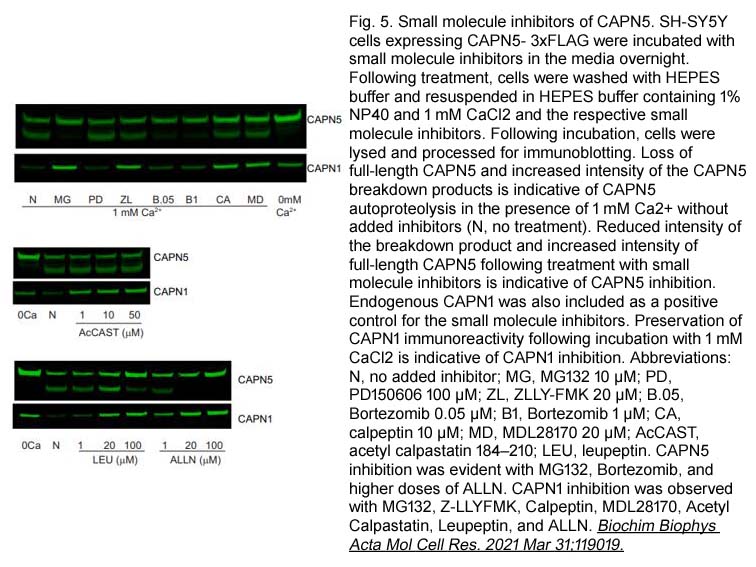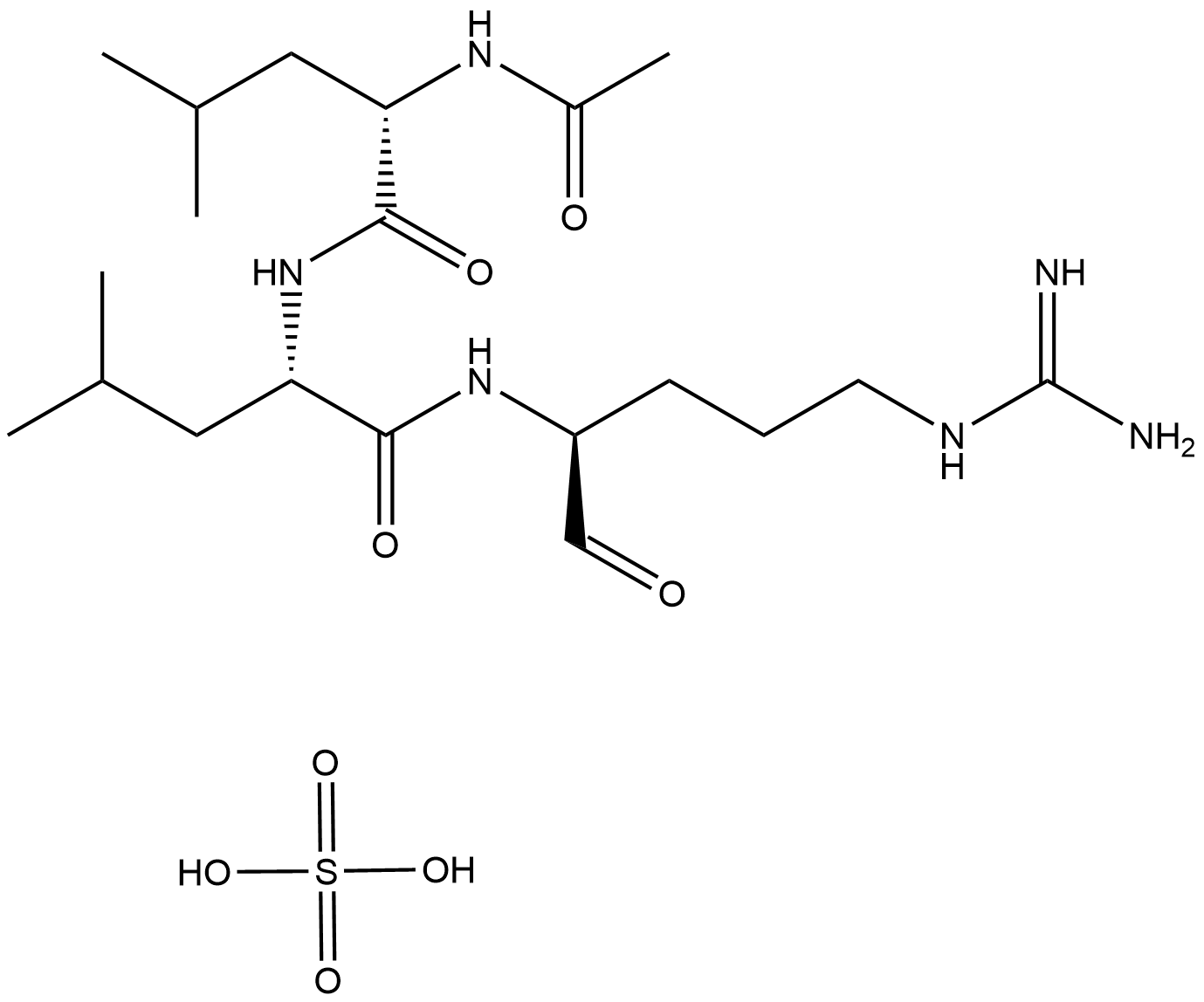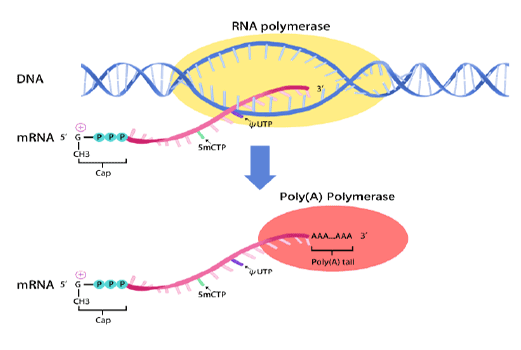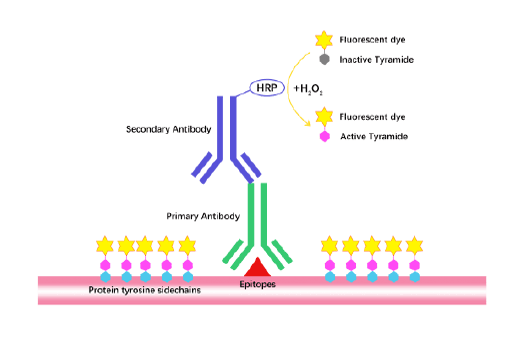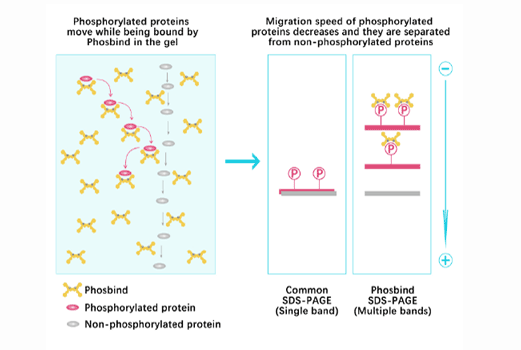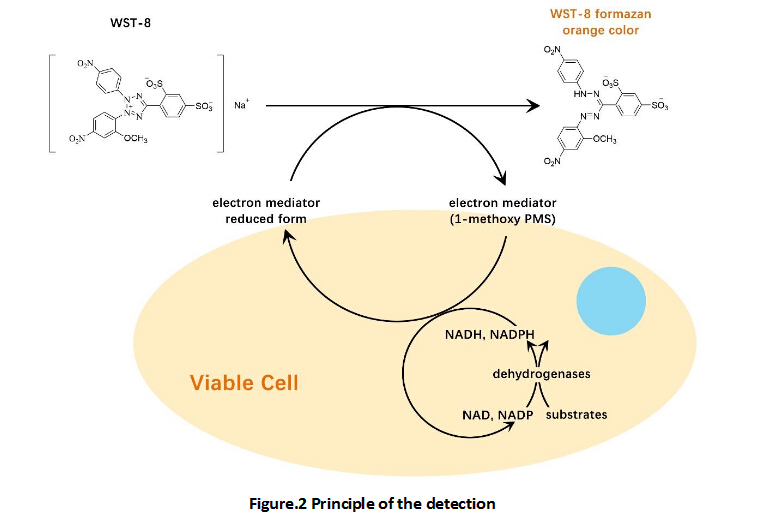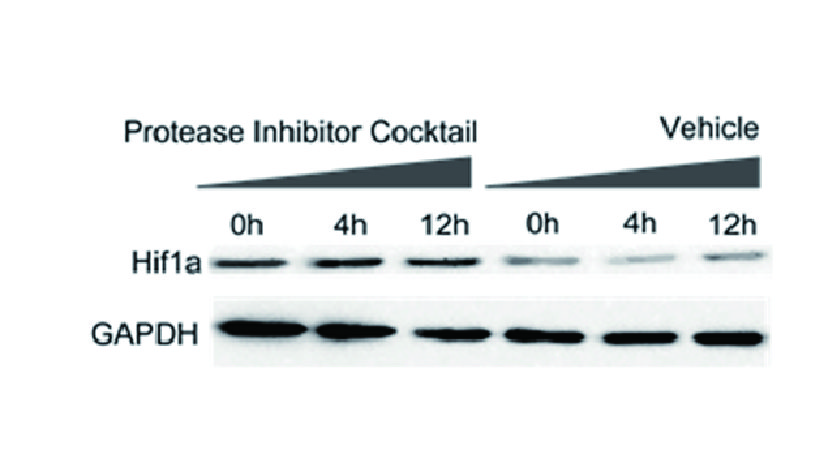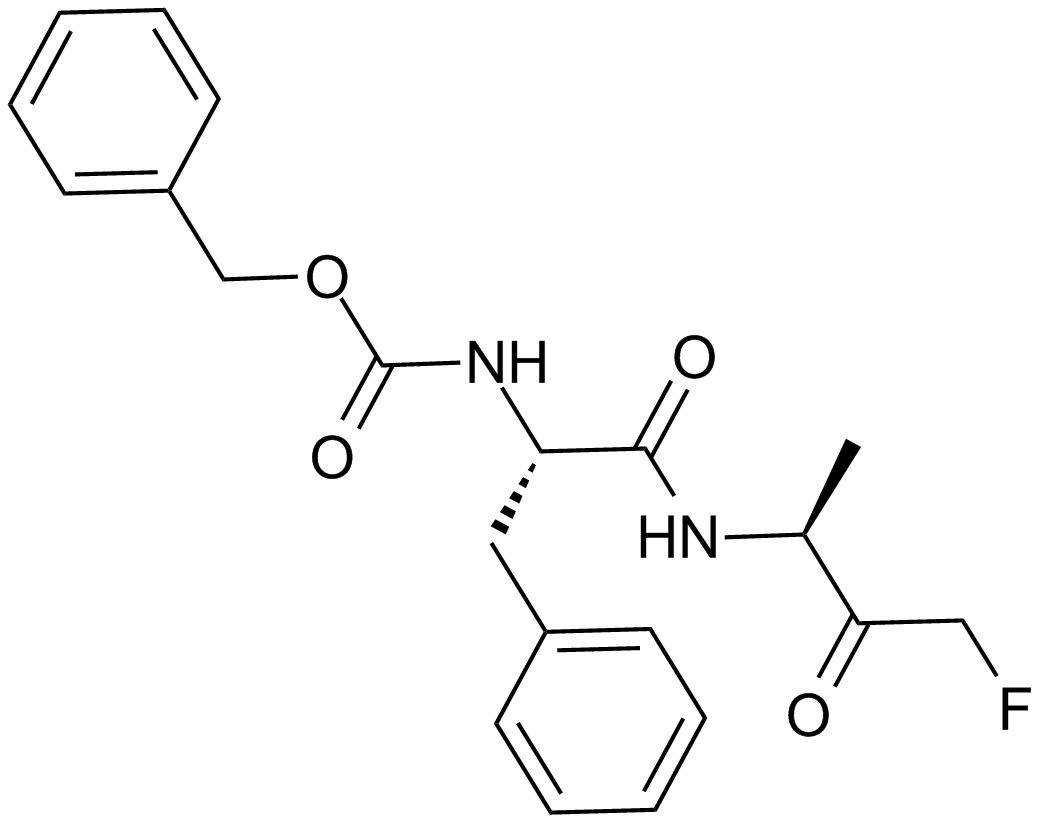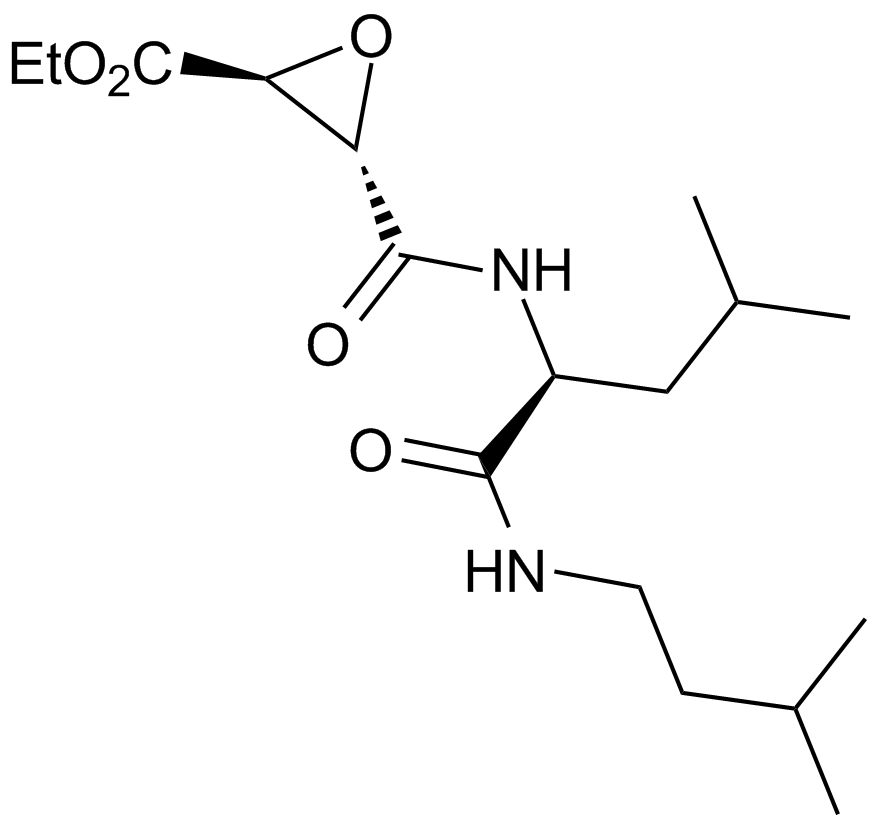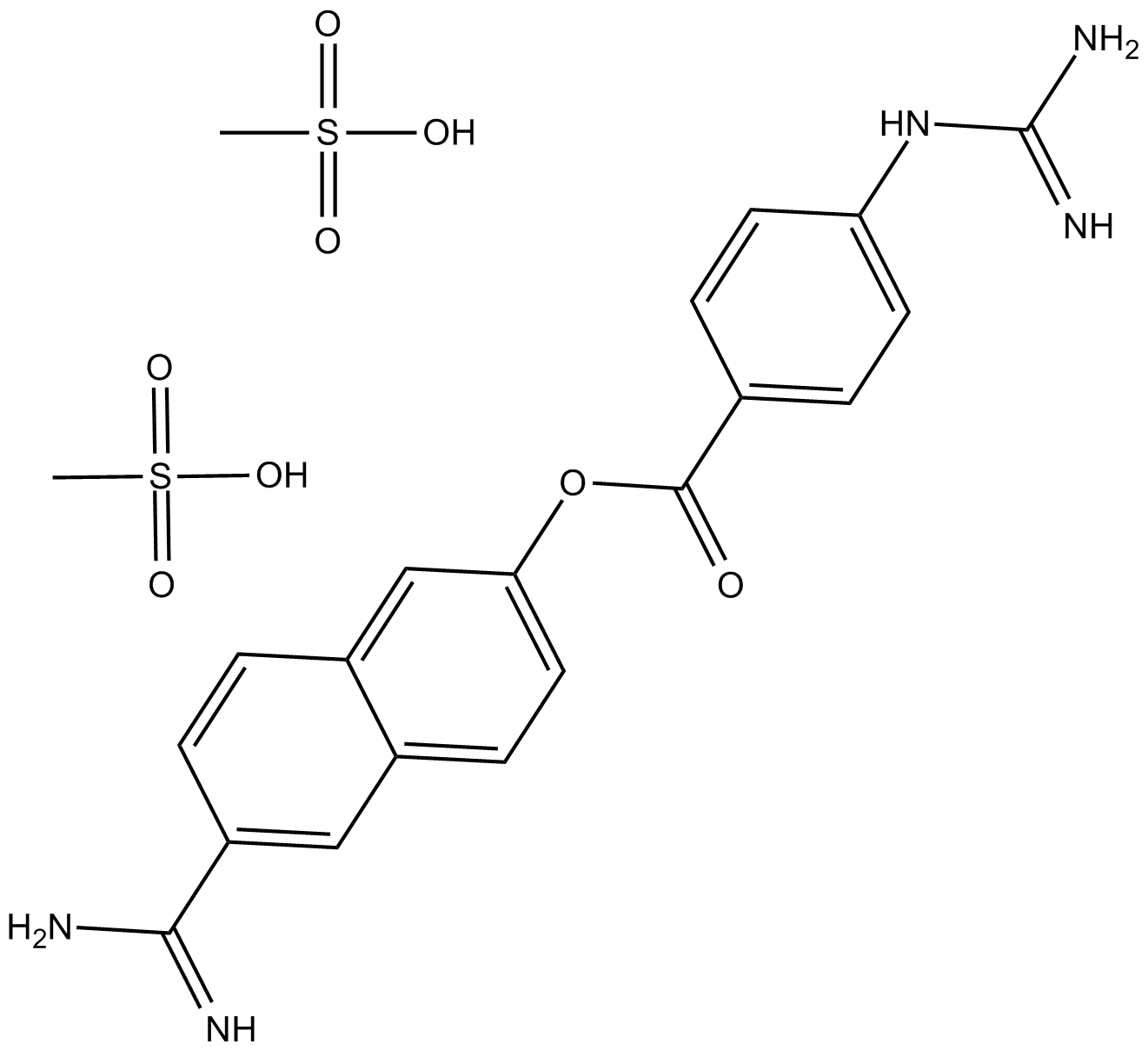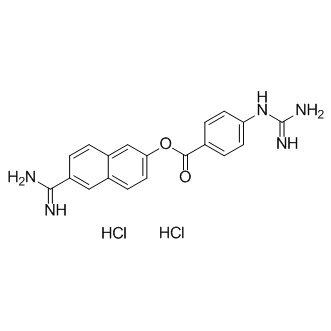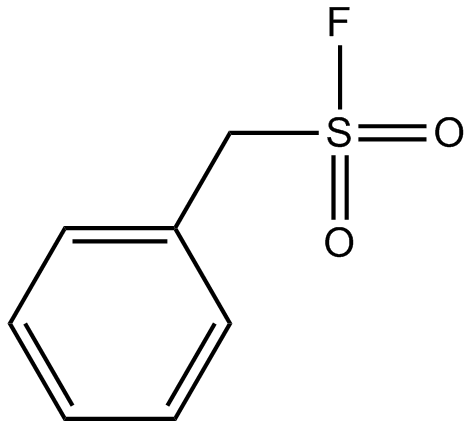Leupeptin, Microbial
Leupeptin(CAS 55123-66-5), microbial-derived, is a reversible inhibitor targeting serine and cysteine proteases such as trypsin, plasmin, cathepsin B, and calpain. It binds proteases competitively, exhibiting inhibitory activities with reported Ki values including 35 nM for bovine trypsin, 3.4 µM for human plasmin, 6 nM for bovine spleen cathepsin B, and 72 nM for recombinant human calpain. Due to its polar C-terminal structure, leupeptin exhibits limited membrane permeability. The compound has been utilized extensively in biochemical research involving protease activity regulation, protein degradation studies, and investigations of viral replication. For example, leupeptin treatment was documented to suppress trypsin-dependent replication of human coronavirus 229E in MRC-C cell culture, yielding an average IC50 of approximately 0.8 µM.
References:
1. Mehdi S. Cell-penetrating inhibitors of calpain. Trends in biochemical sciences, 1991, 16: 150-153.
2. Krauser J A, Powers J C. 6.1 BIOLOGICAL ROLES. Proteinase and Peptidase Inhibition: Recent Potential Targets for Drug Development, 2003: 144.
3. Appleyard G, Tisdale M. Inhibition of the growth of human coronavirus 229E by leupeptin. Journal of general virology, 1985, 66(2): 363-366.
- 1. Shuyuan Zhang, Zhou-Li Cheng, et al. "Protocol for elucidating metabolite binding and regulation of TET2 dioxygenase." STAR Protoc. 2025 Aug 6;6(3):104015. PMID: 40773351
- 2. Minjing He, Tianhao Chu, et al. "Inhibition of macrophages inflammasome activation via autophagic degradation of HMGB1 by EGCG ameliorates HBV-induced liver injury and fibrosis." Front Immunol. 2023 Apr 14:14:1147379. PMID: 37122751
- 3. Vimala Bondada, Jozsef Gal, et al. "The C2 domain of calpain 5 contributes to enzyme activation and membrane localization." Biochim Biophys Acta Mol Cell Res. 2021 Jun;1868(7):119019. PMID:33811937
- 4. Adams MK, Belyaeva OV, et al. "Generation and isolation of recombinant retinoid oxidoreductase complex.." Methods Enzymol. 2020;637:77-93. PMID: 32359661
- 5. HeLia, GuanghuiDanga, et al. "Characterization of a novel Mycobacterium tuberculosis serine protease (Rv3194c) activity and pathogenicity." Tuberculosis. Available online 4 November 2019, 101880.
| Storage | Store at -20°CThe product is not stable in solution, please dissolve it immediately before use. |
| M.Wt | 524.63 |
| Cas No. | 103476-89-7 |
| Formula | C20H38N6O4·H2SO4 |
| Synonyms | Leupeptin hemisulfate salt microbial,L-Leucinamide,Leupeptin, Microbial |
| Solubility | ≥24.7 mg/mL in DMSO; ≥53.5 mg/mL in EtOH; ≥54.4 mg/mL in H2O |
| Chemical Name | (S)-2-acetamido-N-((S)-1-(((S)-5-guanidino-1-oxopentan-2-yl)amino)-4-methyl-1-oxopentan-2-yl)-4-methylpentanamide sulfate |
| SDF | Download SDF |
| Canonical SMILES | O=C([C@@H](NC(C)=O)CC(C)C)N[C@@H](CC(C)C)C(N[C@H](C=O)CCCNC(N)=N)=O.OS(O)(=O)=O |
| Shipping Condition | Small Molecules with Blue Ice, Modified Nucleotides with Dry Ice. |
| General tips | We do not recommend long-term storage for the solution, please use it up soon. |
| Cell experiment [1]: | |
|
Cell lines |
MRC-C cells infected with HCV 229E |
|
Preparation method |
The solubility of this compound in DMSO is ≥49.35 mg/mL. General tips for obtaining a higher concentration: Please warm the tube at 37°C for 10 minutes and/or shake it in the ultrasonic bath for a while. Stock solution can be stored below -20°C for several months. |
|
Reaction Conditions |
0, 1, 10 and 100 μg/mL; 24 hrs |
|
Applications |
In cultures of MRC-C cells, Leupeptin prevented multiplication of the human coronavirus strain 229E. The IC50 value of Leupeptin in plaque tests was 0.4 μg/mL, whilst growth of host cells was unaffected by Leupeptin at 50 μg/mL. In single-cycle growth experiments, Leupeptin (100 μg/mL) reduced virus yield only if added within 2 hrs of infection, indicating its action on an early stage of virus replication. |
| Animal experiment [2]: | |
|
Animal models |
C57BL/6NCrl male mice |
|
Dosage form |
0, 9, 18 36 and 40 mg/kg; i.p. |
|
Applications |
Leupeptin was well tolerated by the animals and dose-dependently produced a substantial increase in LC3b-II in both the total tissue extracts and the lysosome enriched fraction (LE fraction). At the electron microscopy (EM) level, leupeptin induced the accumulation of electron-dense vesicular structures that, in hepatocytes, were visible by 60 min after treatment (40 mg/kg). The results suggested that Leupeptin enhanced LC3b-II levels in vivo by protecting this protein from being degraded inside lysosomes, and thus the leupeptin-based assay could be potentially used for studying the dynamics of macroautophagy in mice. |
|
Other notes |
Please test the solubility of all compounds indoor, and the actual solubility may slightly differ with the theoretical value. This is caused by an experimental system error and it is normal. |
|
References: [1]. Appleyard G, Tisdale M. Inhibition of the growth of human coronavirus 229E by leupeptin. Journal of general virology, 1985, 66(2): 363-366. [2]. Haspel J, Shaik RS, Ifedigbo E, Nakahira K, Dolinay T, Englert JA, Choi AM. Characterization of macroautophagic flux in vivo using a leupeptin-based assay. Autophagy. 2011 Jun;7(6):629-42. |
|
| Description | Leupeptin, Microbial(Leupeptin hemisulfate ) is an reversible, competitive inhibitor of the proteases with Ki values of 0.13 nM and 7 nM for trypsin and cathepsin B, respectively. | |||||
| Targets | Trypsin | Cathepsin B | ||||
| IC50 | 0.13 nM (Ki) | 7 nM (Ki) | ||||
Quality Control & MSDS
- View current batch:
Chemical structure
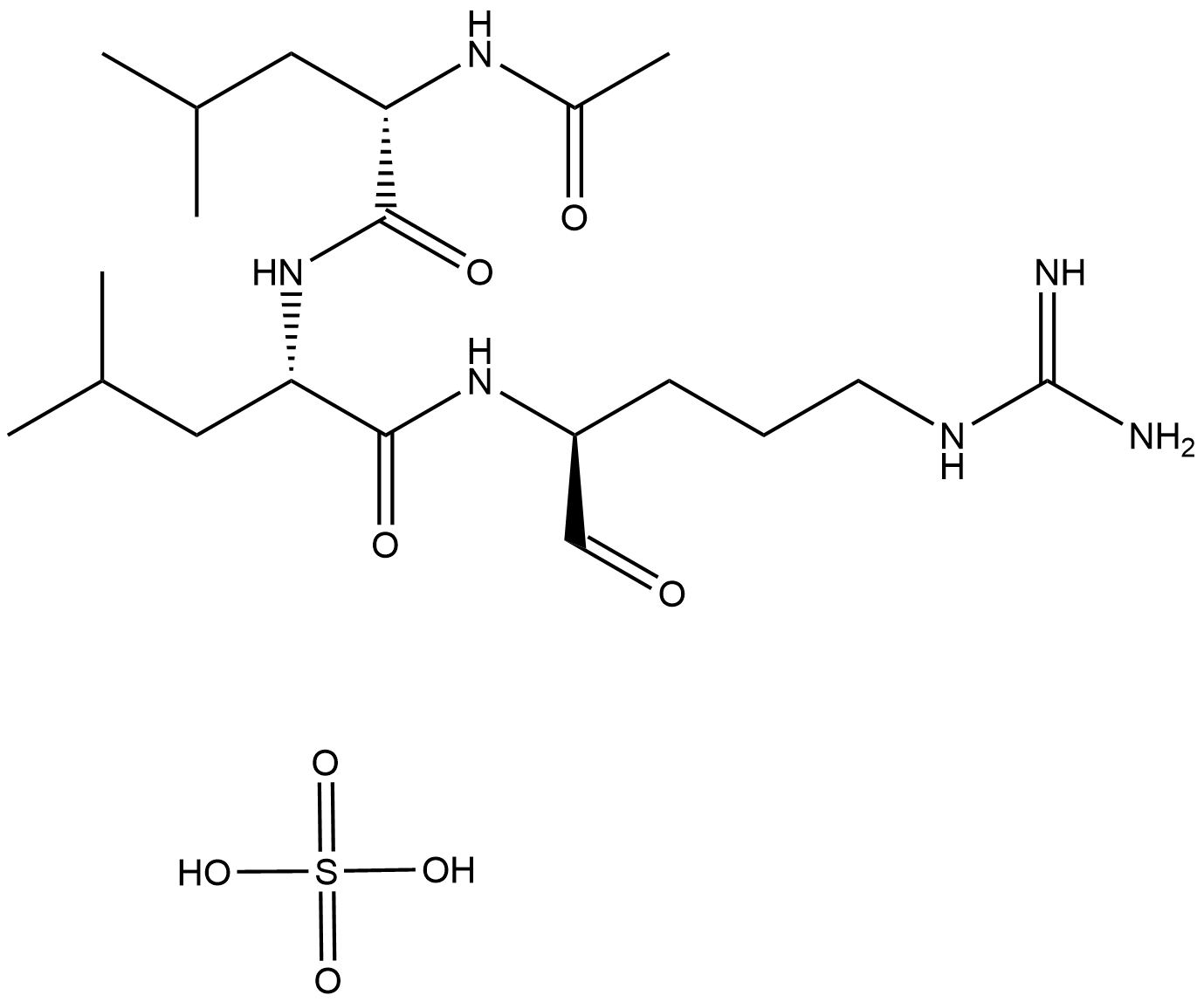
Related Biological Data
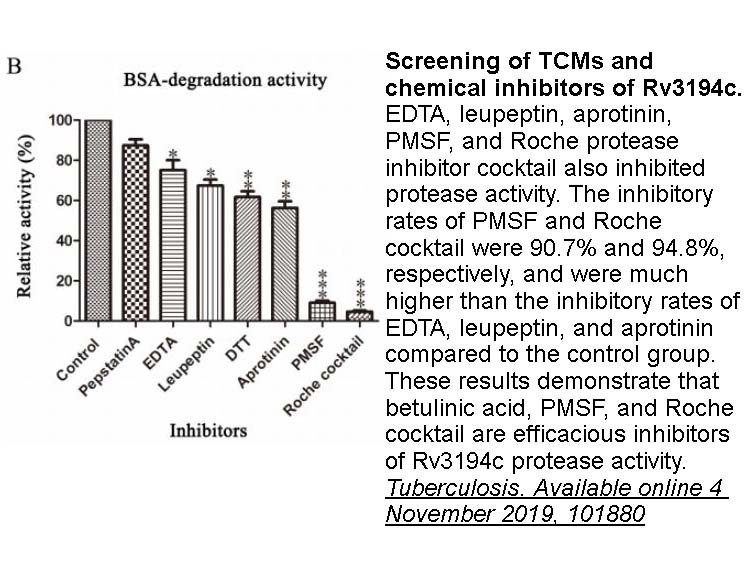
Related Biological Data
